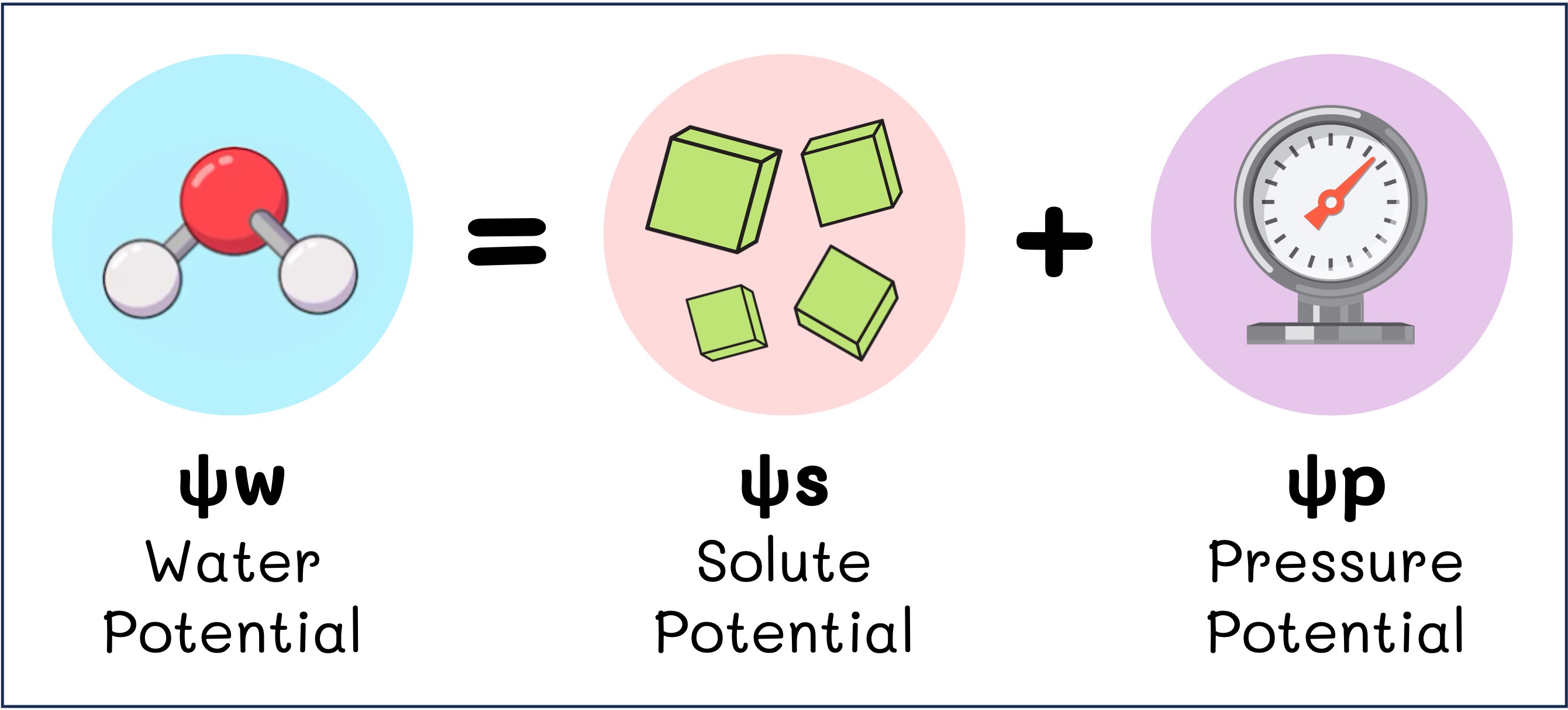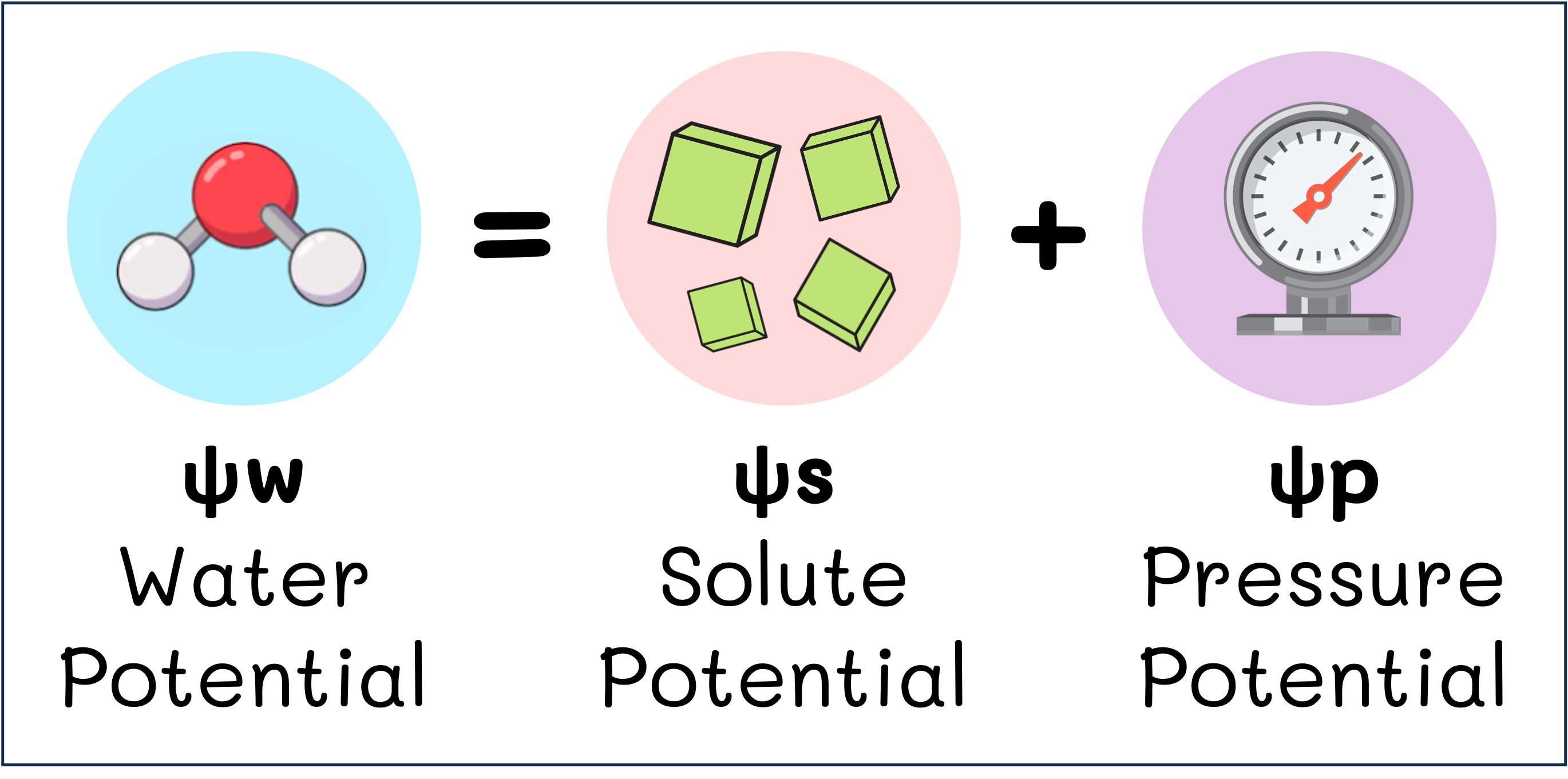

Water Potential
Water potential (ψw) is the potential energy of water, per unit volume (measured in units of pressure called kilopascal, or kPa)
-
Water potential describes the energy stored within water molecules that allow them to do work (i.e. movement)
As it is impossible to measure the absolute quantity of potential energy in water, water potential is always stated relative to pure water at atmospheric pressure and a temperature of 20ºC
-
The water potential of pure water is given a value of 0 kPa and impure solutions (containing solutes) will have a lower water potential (negative values)
Water Potential Equation
Water potential is influenced by a variety of factors, including solute potential and pressure potential
-
The water potential can be determined according to the formula: ψw = ψs + ψp
The solute potential (ψs) represents the effect of dissolved solutes on the water potential of a solution
-
The solute potential (also called osmotic potential) reduces the magnitude of the water potential
-
The solute potential will be 0 in pure water and negative in any solution (such as the cytoplasm of a cell)
The pressure potential (ψp) represents the effect of hydrostatic pressure on the water potential of a solution
-
The pressure potential in plants (also called turgor potential) is the pressure exerted by the cytoplasm on the cell wall
-
It is usually a positive value in plant cells, while animal cells tend to have a ψp close to 0 (due to the lack of a cell wall)
-
Plants establish positive pressure potentials in guard cells to cause the stomata to open for gas exchange
-
Plants establish negative pressure potentials in xylem vessels to cause water to be transported under tension
-
Calculating Water Potential






